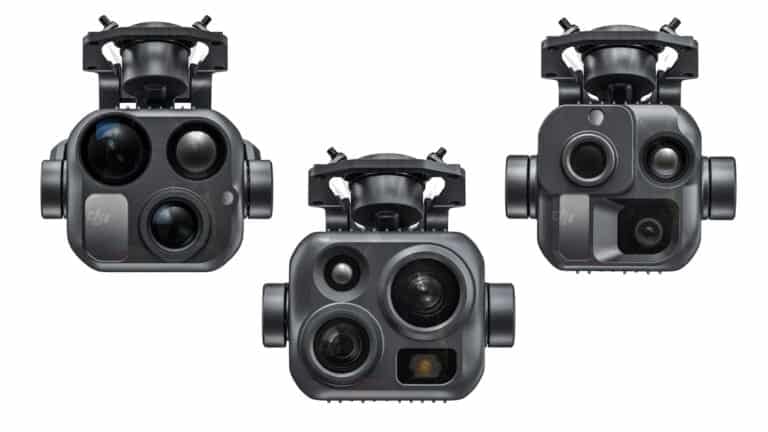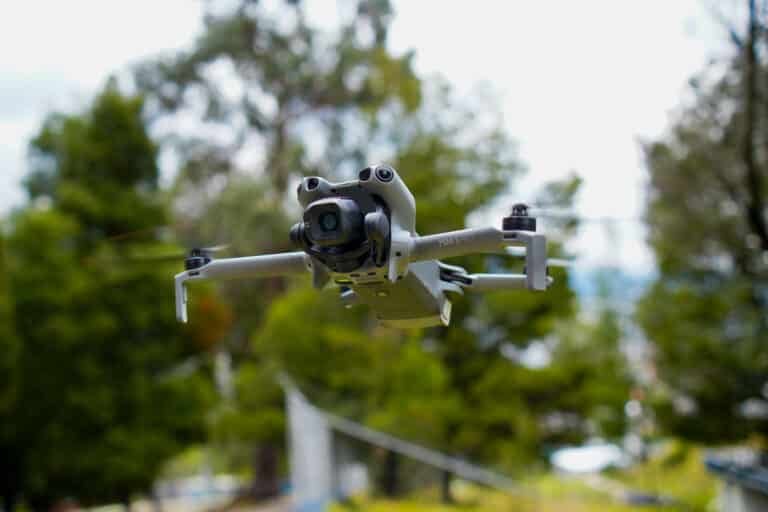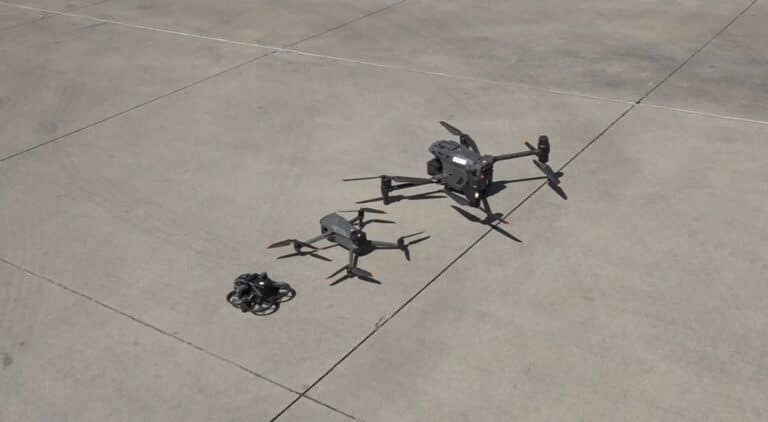College Students Stun Defense Giants with Innovative Sound-Based Anti-Drone Tech

Amazon Drone Deals: DJI Mini 5 Pro Fly More Combo with DJI RC2 now for $1,099!
In a remarkable turn of events, four University of Toronto engineering students outmaneuvered Boeing and other defense industry titans in an anti-drone technology competition. Their ingenious device, which uses sound waves to disrupt drone navigation systems, has sent shockwaves through the defense sector, as reported by the Wall Street Journal.
From Dorm Room Dreams to Competition Champions
The journey of these students is a classic tale of innovation born from necessity. It all began with a simple conversation over tea between Anna Poletaeva and Parth Mahendru. Realizing they couldn’t afford to build conventional anti-drone weapons, they decided to think outside the box.
“We are building from scratch, we had no reference whatsoever,” Poletaeva explained, highlighting the team’s pioneering spirit.
Their unconventional approach led them to explore using sound waves to target drone components. What started as a makeshift setup in Mahendru’s living room evolved into a sophisticated system capable of knocking drones out of the sky. The team, which grew to include Asad Ishaq and Michael Acquaviva, invested around $17,000 of their own money into developing this groundbreaking technology.
David vs. Goliath: The Competition Showdown
The stage for their David vs. Goliath moment was set at a military base in southern Alberta. Here, the students’ startup, aptly named Prandtl Dynamics after a German aerospace pioneer, faced off against industry behemoths. The contrast was stark – rival teams rolled up in large SUVs, sporting company-branded attire, while the Prandtl team arrived with their home-brewed tech.
“That kind of scared us,” Mahendru, who now serves as Prandtl’s chief executive, admitted. “We realized that this was not just a student project anymore.”
Despite the intimidating competition, Prandtl’s system performed beyond expectations. It successfully knocked one drone out of the sky and sent others veering off course in a display of its effectiveness. This impressive showing earned Prandtl second place out of 15 entries, tying with another four-person startup. The top spot went to a laser weapon developed by AIM Defence, a small Australian company, further underscoring the potential of agile, innovative startups in this space.

Challenges Ahead and Future Prospects
Prandtl’s success has certainly turned heads, but the road ahead is not without its hurdles. The Canadian Army has expressed interest in their technology, but with a caveat – they need the effective range increased from 50 to at least 100 meters.
Gregory Falco, a professor at Cornell University and an expert in aerospace security, weighed in on the challenge: “They will need a lot more sound,” he said, “or figure out how to better direct the waves to the target.”
The team remains optimistic about reaching the 100-meter milestone but acknowledges that pushing beyond 150 meters will be a significant challenge. They’re not resting on their laurels, though. The students are actively exploring various methods to amplify sound waves, including the use of magnets and lenses.
Another hurdle for Prandtl is the rapidly evolving nature of drone technology. “Drone makers are constantly coming up with new ways to guard against countermeasures,” Poletaeva noted.
In response, the team is already testing their tech against potential defensive measures, such as foam that could be added to drones to block sound waves.
From Student Project to Startup Reality
The transition from a university project to a full-fledged company has been a whirlwind for the team. They’ve had to quickly learn the ropes of the business world, seeking advice from unexpected sources. Acquaviva, for instance, sought guidance from a corporate lawyer who lived on his parents’ street, while Ishaq turned to a family friend for help with pitch books.
Despite the steep learning curve, the team’s success has brought tangible rewards. Mahendru, who had racked up almost $9,000 in credit-card debt funding the project, saw the company leave the competition with more than $270,000 in prize money. This windfall has allowed Prandtl to seek new premises, investors, and clients as they look to establish themselves in the defense industry.
DroneXL’s Take
The success of Prandtl Dynamics is more than just a feel-good story of underdogs triumphing against the odds. It represents a significant shift in the drone industry, particularly in the realm of counter-drone technologies. This case demonstrates how smaller, more agile teams can innovate and compete effectively against established giants.
The sound-based approach developed by Prandtl offers a non-destructive alternative to traditional counter-drone measures. This could be particularly valuable in sensitive areas like airports or urban environments, where conventional anti-drone methods might pose risks. As we’ve seen in our recent coverage of drone technology advancements, the field is ripe for disruption from unexpected sources.
Moreover, this story highlights the growing importance of counter-drone technologies in today’s world. As drones become more prevalent in both civilian and military contexts, the need for effective, adaptable, and safe counter-measures becomes increasingly crucial. Prandtl’s innovative approach could pave the way for a new generation of drone defense systems that are more accessible and adaptable to various scenarios.
What are your thoughts on this student-led innovation in anti-drone technology? Do you think sound-based systems like Prandtl’s could be the future of drone defense? We’d love to hear your views in the comments below.
Photo courtesy of Prandtl Dynamics.
Discover more from DroneXL.co
Subscribe to get the latest posts sent to your email.
Check out our Classic Line of T-Shirts, Polos, Hoodies and more in our new store today!

MAKE YOUR VOICE HEARD
Proposed legislation threatens your ability to use drones for fun, work, and safety. The Drone Advocacy Alliance is fighting to ensure your voice is heard in these critical policy discussions.Join us and tell your elected officials to protect your right to fly.
Get your Part 107 Certificate
Pass the Part 107 test and take to the skies with the Pilot Institute. We have helped thousands of people become airplane and commercial drone pilots. Our courses are designed by industry experts to help you pass FAA tests and achieve your dreams.

Copyright © DroneXL.co 2025. All rights reserved. The content, images, and intellectual property on this website are protected by copyright law. Reproduction or distribution of any material without prior written permission from DroneXL.co is strictly prohibited. For permissions and inquiries, please contact us first. DroneXL.co is a proud partner of the Drone Advocacy Alliance. Be sure to check out DroneXL's sister site, EVXL.co, for all the latest news on electric vehicles.
FTC: DroneXL.co is an Amazon Associate and uses affiliate links that can generate income from qualifying purchases. We do not sell, share, rent out, or spam your email.



















Greater care need be exercised in ascribing novelty to this approach. In 2015, KAIST in Korrea successfully invented a sonic system, similar, it appears, to this one, to deviate the gyroscope in the IMU of drones.
Of course such IMU;s are easily shielded from such sound based interference, which is why the sound-based approach was not considered until Drs. Cohen and Shelman-Cohen, in the US, procured patents 10006747 and 10935350 for a drone mitigation system which disrupts via rotor/propellor resonance, not gyroscopes.
These Canadian engineers appear to be causing resonance vibrations in the propellor/rotor system. One may thus view it as foreign corroboration, unfortunately unattributed , to existing invention created and patented in the US. Obviously the US is a likely major customer for drone mitigation systems.
Or, what are we missing?
Nathan Cohen here–
I notice that my relevant question in the prior post was greeted with crickets. Well, here’s some chirp for you:-)
The aforementioned patents are in force; encompass broad claims; constitute prior art for others; and are licensed to a US firm.
They are not and will not be licensed to a foreign firm. That is to say, a firm from outside the USA.
The technology of bringing drones down acoustically , through induced vibrations, is called ACOUSTIC RESONANCE MITIGATION (ARM). It is actively being pursued by the IP owners and their licensee(s).
Needless to say, targeting the IMU directly is not smart, as the acoustic shielding does moderate protection of the MEMS. Targeting the propellors is smart, as you can produce turbulence at the Prandtl layer AND also send vibrations from the propellors to the MEMS. In fact, its very hard to avoid the transport of those vibrations to the MEMS of the IMU from the propellor. And very challenging to mechanically or digitally filter them.
Appreciate there are those who want to know my background– I am an astrophysicist (Ph.D. Cornell University) with a multidisciplinary knowledge base and 55 years of experience in antennas and arrays (ultrasonic arrays are RF arrays where the sensors do transduction to acoustic waves). I understand waves. I understand what a Prandtl layer is. I hold 94 U.S. patents and previously served as a professor of Aerospace and Mechanical Engineering at Boston University.
ARM was conceived well over 10 years ago. The patents tell the dates. This is not the first time one or more of my inventions has taken a while to get traction: its the price one pays for being an inventor–being years ahead.
Hope this helps clarify the technology and ownership.
ARM is an evolving story. Watch the news.
Best to all!
Well, in case you haven’t seen it, the inventor has now made the origin of this technology–ARM– quite clear (dating back over 10 years BTW). See for example:
https://www.electronicspecifier.com/industries/aerospace-defence/technology-developed-to-disarm-drones
Incidentally, a ground based ‘button’ array of 1M aperture does not have a high enough ERAP; has too narrow a beam for real-time tracking-of-target; and the ‘parametric’ products are down 15-30 dB from the ‘carriers’. So its not as frequency agile as one might ‘dream’. IOW its not loud enough and the pencil beam is too narrow.
Please: let’s not pretend this technology was dreamed up in a dorm room. Be more respectful of the efforts done before you.
Thanks!
Nathan Cohen